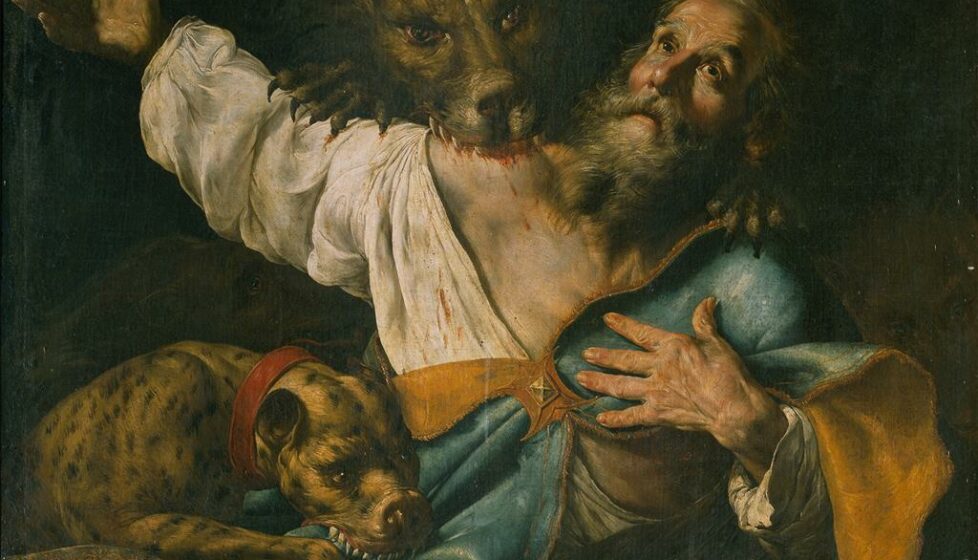Stories of Christian Martyrs: Andrew
Rome

Undoubtedly with his brother Simon’s permission, Andrew temporarily left the fishing nets behind and journeyed to hear a man called John the Baptist. John was the talk of the town and wharf. He urged people to get right with God because the long-awaited Savior was coming. Andrew saw and heard something in John that he liked. This wild man was not only a scathing critic of society’s flaws, but he also offered people hope through repentance. He had a knack for making people feel very bad before he showed them how they could be forgiven. So Andrew became a follower of John the Baptist. Eventually, he was likely joined by his friend John, the son of Zebedee, who recorded the initial steps Jesus took in choosing a group of disciples to train. At some point, at least five of the original apostles were in the area where John the Baptist was carrying out his ministry.
According to the biblical account, Andrew was the first of the
apostolic band to discover Jesus in his unique role as Lamb of God who
takes away the sin of the world. Andrew was standing beside John the
Baptist when the fiery prophet pointed out Jesus as the One he had
come to announce. We don’t know if Andrew witnessed Jesus’s baptism, but John the Baptist probably identified Jesus, who had just
returned from His forty-day wilderness experience that had immediately followed His baptism.
Andrew and his unnamed companion (probably John) approached
Jesus. Jesus invited them to spend time with Him. They immediately
broadened that invitation to include Simon. Within a couple of days,
both Philip and Nathanael joined that small group of seekers. They were
with Jesus when He returned to Cana for a wedding, witnessing Jesus’s
first miracle. Not long after this, Jesus called Simon and Andrew to leave
their nets and follow Him. Andrew never looked back.

Andrew took time for individual people. He noticed their needs and
qualities and understood them. He quietly took action. He connected
people with each other. He connected them with Christ. He introduced
his big brother to Jesus. He was instrumental in other significant introductions, making an impact in people’s lives, one by one. In the end,
tradition tells us, this great quality in the first disciple got him killed.
Andrew is seldom mentioned in the accounts of Jesus’s action, but
he was a constant presence. His few moments in the spotlight reveal
that he was always aware of what was going on and looking for ways
to be helpful.
In John’s account of the feeding of the five thousand (John 6:4-13),
Andrew is the one who offered the quiet suggestion that he had just
spoken with a lad who had five loaves and two fishes. Not much, but
something! And what Jesus did with that little gift was astounding.
John 12:20-26 describes a group of Greeks who wanted to meet Jesus.
They singled out Philip to approach, probably because of his Greek
name, but it’s worth noting that Philip asked Andrew to help him make
the introductions. Andrew’s last appearance by name in Scripture
occurs in Acts 1:13 where he is listed among the eleven disciples as they
chose Matthias to replace Judas. He was doubtless present during those
exciting and turbulent early years in Jerusalem, serving among the
leaders of the church.
While Andrew’s eventual missionary travels may have taken him as
far north as Scythia (southern Russia) and included time around Ephesus
with John, he likely ended up on the Greek peninsula in the city of Patras.
There he began to relate to individuals and introduce them to the Savior.
Among the converts was a woman named Maximilla, the wife of a high
Roman official, a governor named Aegaeas, who was so angry at his
wife’s conversion he threatened Andrew with death by crucifixion. To
this, Andrew replied, “Had I feared the death of the cross, I should not
have preached the majesty and gloriousness of Christ.”
Andrew was arrested and tried. Threatened, scourged, and tortured,
he remained steadfast. It is said that the judge pleaded with Andrew not to cast aside his life, and the old apostle responded with equal passion,
urging the judge not to cast aside his soul.
Unwilling to recant his faith in Christ, Andrew was tied to an
X-shaped cross to die a slow and painful death. This particular cross is
still called St. Andrew’s cross. One source says that when Andrew came
near it, he said, “O beloved cross! I have greatly longed for thee. I rejoice
to see thee erected here. I come to thee with a peaceful conscience and
with cheerfulness, desiring that I, who am a disciple of Him Who hung
on the cross, may also be crucified. The nearer I come to the cross, the
nearer I come to God; and the farther I am from the cross, the farther I
remain from God.”
Andrew hung for three days on the cross; and during this time he
taught the people who stood near him, saying such things as: “I thank
my Lord Jesus Christ, that He, having used me for a time as an ambassador, now permits me to have this body, that I, through a good confession, may obtain everlasting grace and mercy. Remain steadfast in the word and doctrine which you have received, instructing one another,
that you may dwell with God in eternity, and receive the fruit of His
promises.” Only Heaven will reveal the thousands upon thousands of
lives that were eventually transformed by Andrew’s quiet and persistent
work behind the scenes, touching one life at a time.
“Precious in the sight
of the Lord is the death
of His saints.”
Psalm 116:15
This story is an excerpt from Foxe: Voices of the Martyrs. You can get your own copy free with any donation to The Voice of the Martyrs.

